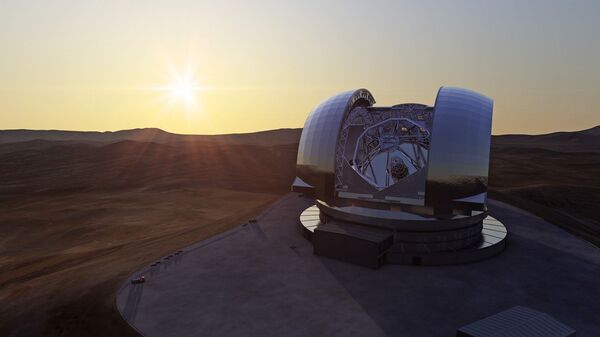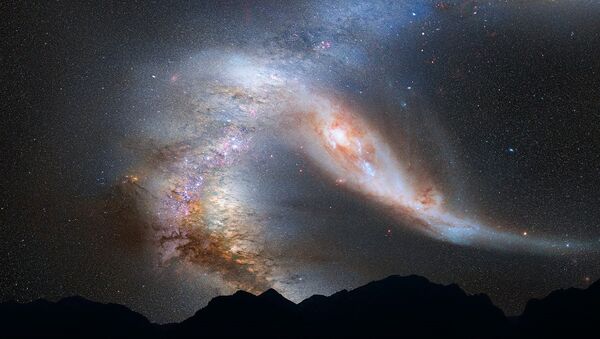Astronomers in the United States and Australia have stumbled upon a monster galaxy from the early universe that has never been seen before, according to a study funded by the National Science Foundation and published in the Astrophysical Journal.
The scientists managed to snap a picture of the galaxy, likened to a cosmic Yeti, for the first time, in a breakthrough that is hoped to provide new insights into the first growing steps of some of the biggest galaxies in the universe.
University of Arizona astronomer Christina Williams, lead author of the study, had noticed a faint light blob in new sensitive observations using the Atacama Large Millimeter Array, or ALMA, a collection of 66 radio telescopes high in the Chilean mountains.

"It was very mysterious because the light seemed not to be linked to any known galaxy at all," said Williams, a National Science Foundation postdoctoral fellow at the Steward Observatory.
"When I saw this galaxy was invisible at any other wavelength, I got really excited because it meant that it was probably really far away and hidden by clouds of dust."
Study co-author Ivo Labbé, of the Swinburne University of Technology in Melbourne, Australia, said:
"We figured out that the galaxy is actually a massive monster galaxy with as many stars as our Milky Way, but brimming with activity, forming new stars at 100 times the rate of our own galaxy."
The researchers estimate that the signal they observed came from so far away that it took 12.5 billion years to reach Earth. Bearing this in mind, what the scientists were observing was a view of the universe in its infancy.
The astronomers believe the observed emission is caused by a warm glow of dust particles heated by stars forming deep inside the young galaxy.
The giant clouds of dust conceal the light of the stars themselves, rendering the galaxy completely invisible.
This discovery may be instrumental in solving a long-standing question in astronomy, the authors said, as experts have been puzzling over the theoretical explanation for why some of the biggest galaxies in the young universe grew up and came of age extremely quickly, as evidenced by recent studies.
These mature galaxies appear to come out of nowhere, as the astronomers never seem to catch them in their formative phase.
Smaller galaxies have been seen in the early universe with the Hubble Space Telescope, but they are not growing fast enough to solve the puzzle.
Other monster galaxies have also been previously reported, but those sightings have been far too rare.
"Our hidden monster galaxy has precisely the right ingredients to be that missing link… because they are probably a lot more common," explained Williams, adding it was still a mystery exactly how many of them there are.
According to the astronomer, researchers are eagerly awaiting the March 2021 scheduled launch of NASA's James Webb Space Telescope to investigate these objects in more detail.
"JWST will be able to look through the dust veil so we can learn how big these galaxies really are and how fast they are growing, to better understand why models fail to explain them," concluded Williams.





